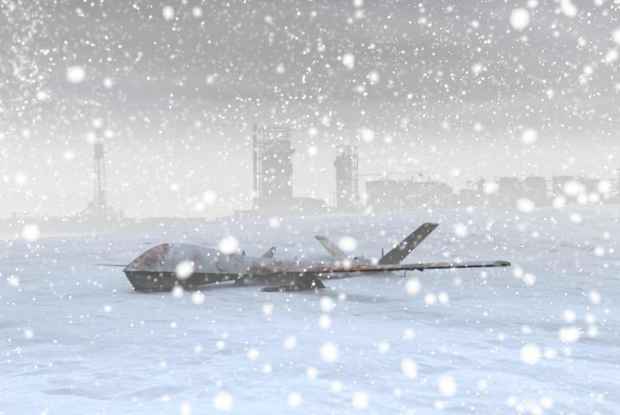Joseph Smolinski “Second Nature”
Mixed Greens Gallery

This event has ended.
Mixed Greens announces their fourth solo exhibition with Joseph Smolinski. Second Nature ponders the dynamic relationship between humans and nature and its impact on our current landscape. His choice of media reflects these ruminations, using technology to envision the future and ever-changing silver point to resist a fixed vision of our present.
Over the last year, Smolinski has been a fellow at Wesleyan University as the Menakka and Essel Bailey ’66 Distinguished Visiting Scholar in the College of the Environment. He was a member of a think tank charged with the theme, “Struggling through the Anthropocene: Science, History, Art, and Politics.” In essence, the participants were considering how to define nature in an age when the interventions of humans, both benign and harmful, are evident across the globe. Does nature need to be redefined? What will this Second Nature look like and how will humans curate life on our planet? Smolinski’s research is manifested in the form of drawings, video, and sculpture.
In the drawing series, A Question of Dominion, Smolinski uses the labor-intensive medium of silver point to render species tagged with radio and GPS tracking devices. These monitored animals include endangered species, animals considered game, and invasive species. To make the creatures visible, Smolinski must apply thousands of marks to the page. Even then, the animals—from spotted owls to kangaroo rats—are apparitional. Only with time will the patina darken and the images become more concrete. This space between visibility and invisibility is one in which Smolinski finds great resonance. Inevitably, the telemetry tags will monitor and digitize the lives of these creatures, informing decisions regarding survival, extinction, and the zoological future on Earth.
Similarly, Smolinski contemplates our dependence on bees for food production and our role in their alarmingly rapid disappearance. 3D printed sculptures titled Ghost Bees serve as small monuments to the honeybees that have succumbed to colony collapse disorder. The white, larger-than-life renderings of the creatures writhe atop concrete hive fragments.
The final, large-scale works in the show are a 3D animated video, Colony Collapse, with a score by Minneapolis musician Andy Flynn, and a graphite drawing, This Compost. The video transports the viewer through a snowy landscape littered with structures representing the oil industry, corporate agriculture, and the military-industrial complex. Through subtle shifts of time, space, and climate, questions are posed about the natural order of the environment and our future within it. In This Compost, the skeletal remains of a human are found inside of a storm-damaged tree. This one static image conflates Smolinski’s memory of a St. Paul winter carnival myth, skeletal remains found in New Haven, CT after Hurricane Sandy, the lost colony of Roanoke, and a poem of the same title by Walt Whitman. Whitman’s poem contemplates nature’s ability to turn diseased human corpses into clean and fertile soil that sustains life.
Media
Schedule
from March 26, 2015 to April 25, 2015
Artist Talk: Saturday, April 11, 1pm
Opening Reception on 2015-03-26 from 18:00 to 20:00